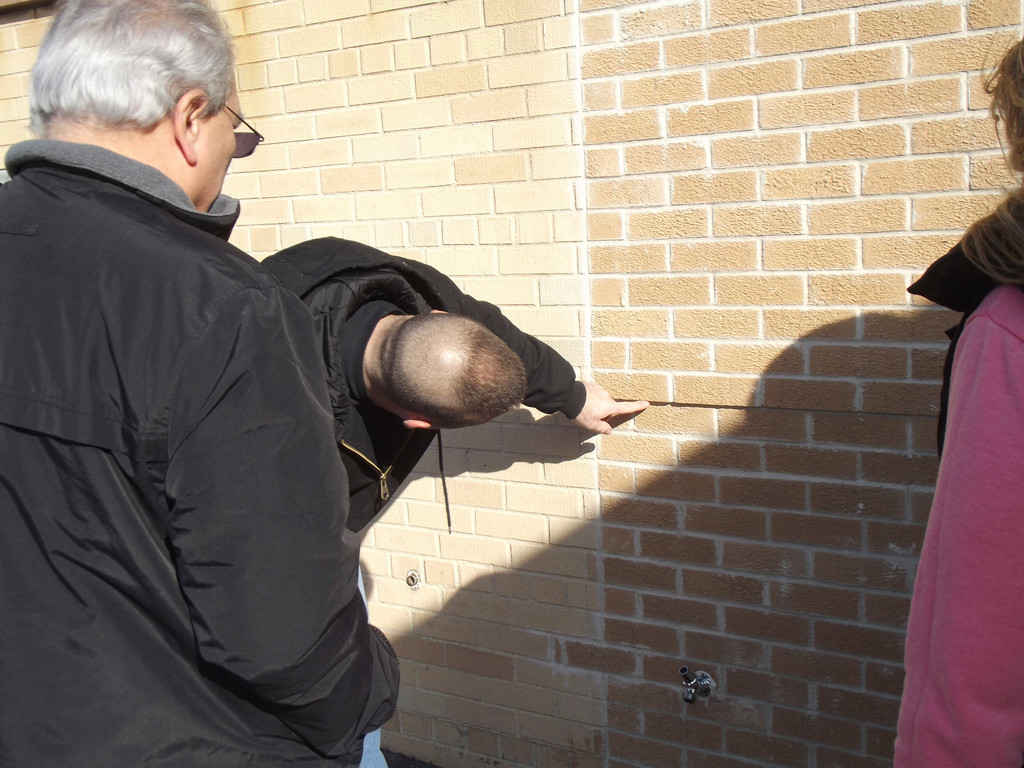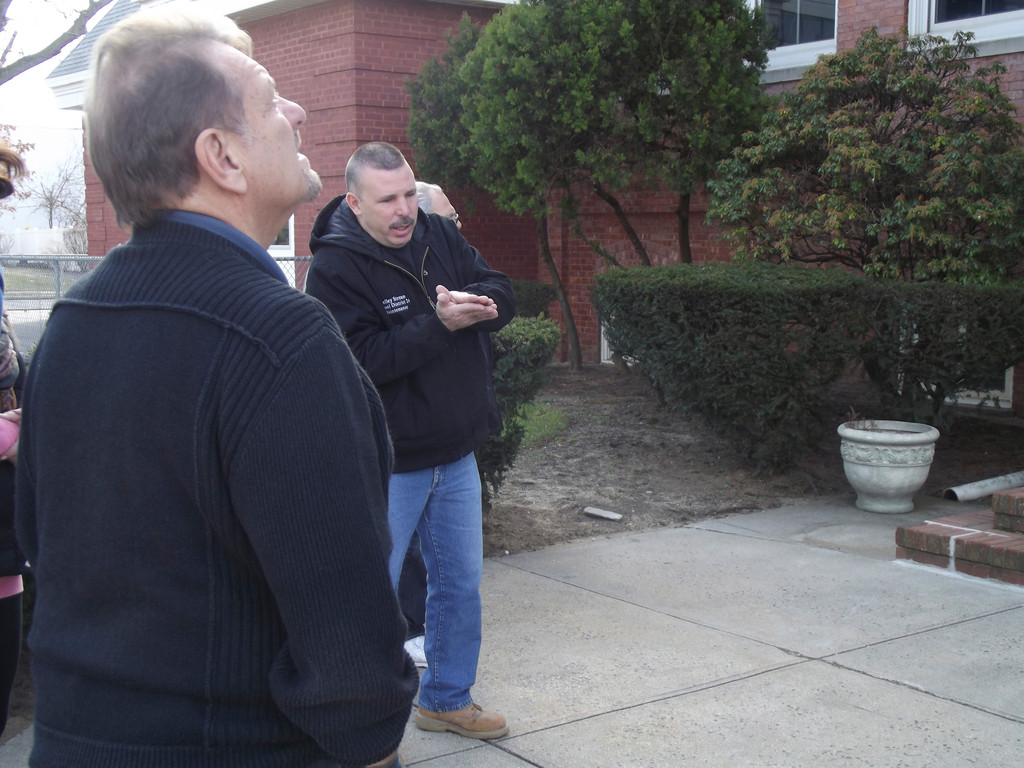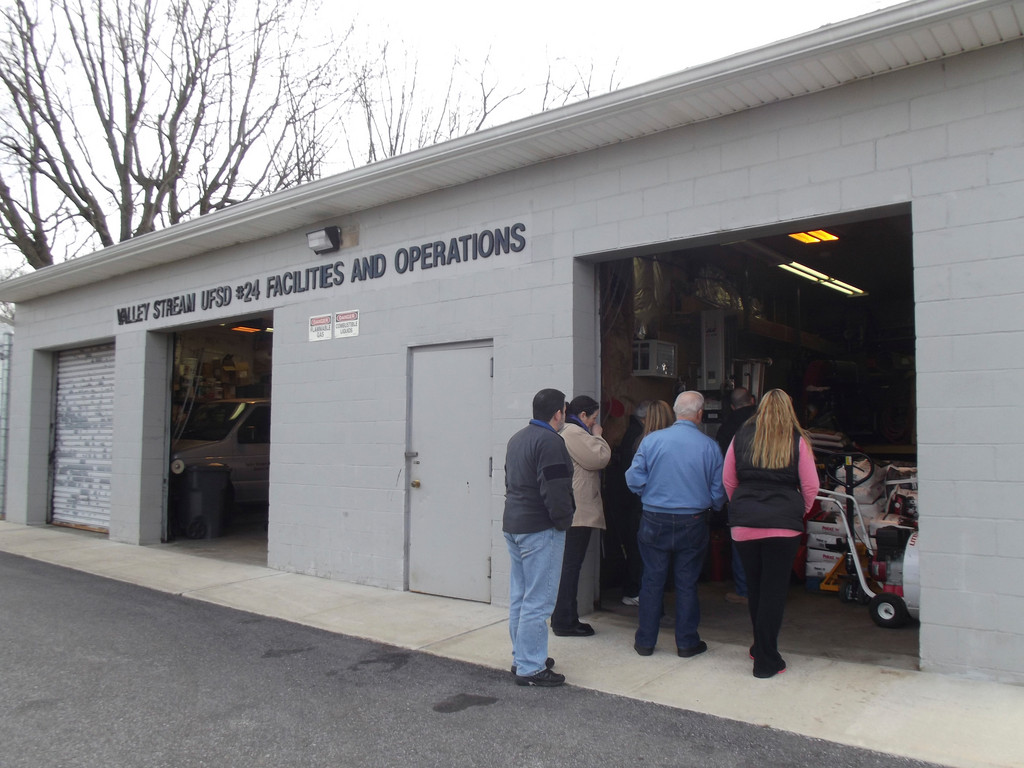Work on tap for District 24 buildings
The District 24 Board of Education got an in-depth look during the annual facilities tour on Feb. 4 at the projects that are envisioned for the district’s three elementary schools in the coming months.
Charlie Brocher, the district’s maintenance supervisor, led the tour at each of the three schools, pointing out already approved changes that will be made, and other possible projects that are currently only being discussed among school officials.
One major project that Brocher highlighted was masonry work on the exterior of the William L. Buck School. Brocher pointed out several cracks in the brickwork and said that this is due to plowing snow against the building. Also, when the building’s roof was repaired in 2007, moisture may have built up between the bricks and foundation. Brocher said there is approximately an inch of space between the bricks and foundation, but the foundation itself has sustained no damage.
Over the past two years, District 24 has allotted $200,000 for masonry work at all three schools, but the main project will be at the William L. Buck School.
Brocher said he would have a walk-through with an architect about the masonry project in two weeks. From there, the plans will have to be approved by the state, and construction can begin anytime after that. The back of the building — near where the fields are — is the area that will have its bricks replaced. Brocher pointed out that this area does not have any “weep holes” for water to escape, another reason why it’s in bad shape.
The William L. Buck School will also get a new electrical system in the near future, much like the one that was recently installed in the Robert W. Carbonaro School, although a timetable for this project has not been finalized. Brocher said the electrical systems in both William L. Buck School and Brooklyn Avenue School are outdated and finding parts to repair the current systems is difficult because companies stopped manufacturing them.
At the Brooklyn Avenue School, the board saw the new boiler system that was installed this past summer and discussed adding a handicap accessible ramp to the school’s main entrance. Also, the board got a look at the school’s electrical system controls, located in an art room.
“All of the handheld switch controls would be changed over to circuit breakers,” Brocher said. “If we have any nasty rain or heavy snow with ice melt we’ve noticed some flooding in here because there’s a manhole outside and the wires coming into the building aren’t sealed properly.” Brocher added that the lighting company has worked on solving the issue.
Brocher discussed adding a chair lift to the Brooklyn Avenue stage to make it handicap accessible, but he said for that to happen, a new electrical system must be installed because the current system isn’t powerful enough.
The last stop on the tour was the Robert W. Carbonaro School where the board examined the new electrical system. The system is not finished yet, but school officials said that it will probably be a part of the 2012-13 school budget proposal. Brocher mentioned that one project on his agenda is redoing the sinks in the classrooms because they are old and rotting underneath.
The main project that was discussed was outside of the Robert W. Carbonaro School, but within its property line. Two years ago, the board approved building an extension on the Facilities and Operations Building, but because money was tight, the project never came to be. Brocher said the money for the extension is set aside, but since it has been two years since the project was approved, it must go back to the state for re-approval.
The Facilities and Operations Building would stretch from its present location to the area that currently stores the district’s trailer, tractor and other large items. The extension would also be taller so items could be stored above the workplace and space could be saved.
“Ultimately, this is not something that we would have to wait to do over the summer,” Brocher said. “Anytime we get the approval we could start building because the current part of the building would stay secure.”

 52.0°,
Mostly Cloudy
52.0°,
Mostly Cloudy 









